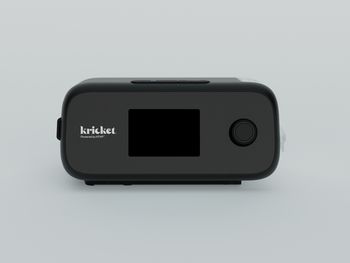
Pfizer, BioNTech seek EUA for booster against COVID-19 Omicron variant
Novavax vaccine recommended for youths; FDA updates fact sheets on Paxlovid.
As autumn approaches with possibilities of
The U.S. Food and Drug Administration will consider EUA for a booster dose for people aged 12 years and older and if approved, the vaccine will be available to ship immediately, according to the announcement from the companies.
“The agility of the mRNA platform, together with extensive clinical experience with the Pfizer-BioNTech COVID-19 Vaccine, has allowed us to develop, test and manufacture updated, high-quality vaccines that align to circulating strains with unprecedented speed,” Pfizer Chairman and CEO Albert Bourla said in a
A conditional marketing authorization application has also been initiated with the European Medicines Agency (EMA) for the Omicron BA.4/BA.5-adapted bivalent vaccine and is expected to be completed in the coming days.
“Given the ongoing evolution of SARS-CoV-2 and its variants, it's of great importance that vaccines can be rapidly adapted to the major circulating Omicron lineages,” BioNTech CEO and cofounder Prof. Ugur Sahin, MD, said in the news release. “In less than three months after the FDA provided its guidance for adapted vaccines in the U.S., we are ready to ship the first doses of our Omicron BA.4/BA.5-adapted bivalent vaccine, pending regulatory authorization, to provide people in the U.S. with the possibility to get a booster adapted to the currently most dominant strain of the virus.”
The Pfizer and BioNTech announcement said the bivalent vaccine contains mRNA encoding the original SARS-CoV-2 spike protein with mRNA encoding the spike protein of the Omicron BA.4/BA.5 variant. “Preclinical data showed a booster dose of the Omicron BA.4/BA.5-adapted bivalent vaccine generated a strong neutralizing antibody response” against the Omicron variants and the original strain.
Novavax
On Aug. 19, FDA authorized the
The U.S.
CDD noted the Novavax shot uses proteins of the COVID-19 virus with an adjuvant to activate the human immune system. It is different from the Pfizer-BioNTech mRNA vaccines and the protein technology has been used more than 30 years in the United States in vaccines for diseases such as hepatitis B, inflenza and whooping cough.
“Novavax’s COVID-19 vaccine, which is available now, is an important tool in the pandemic and provides a more familiar type of COVID-19 vaccine technology for adolescents,” the CDC statement said. “Having multiple types of vaccines offers more options and flexibility for the public, jurisdictions, and vaccine providers.”
Paxlovid
This month, FDA reissued its letter of EUA for Pfizer’s Paxlovid for the treatment of mild to moderate COVID-19 in adults and youths aged 12 years and older, and who are at high risk for progression to severe COVID-19, including hospitalization or death.
The pharmaceutical maker must
The federal agency this month published Pfizer’s updated
The updated fact sheet explains how
Newsletter
Stay informed and empowered with Medical Economics enewsletter, delivering expert insights, financial strategies, practice management tips and technology trends — tailored for today’s physicians.








